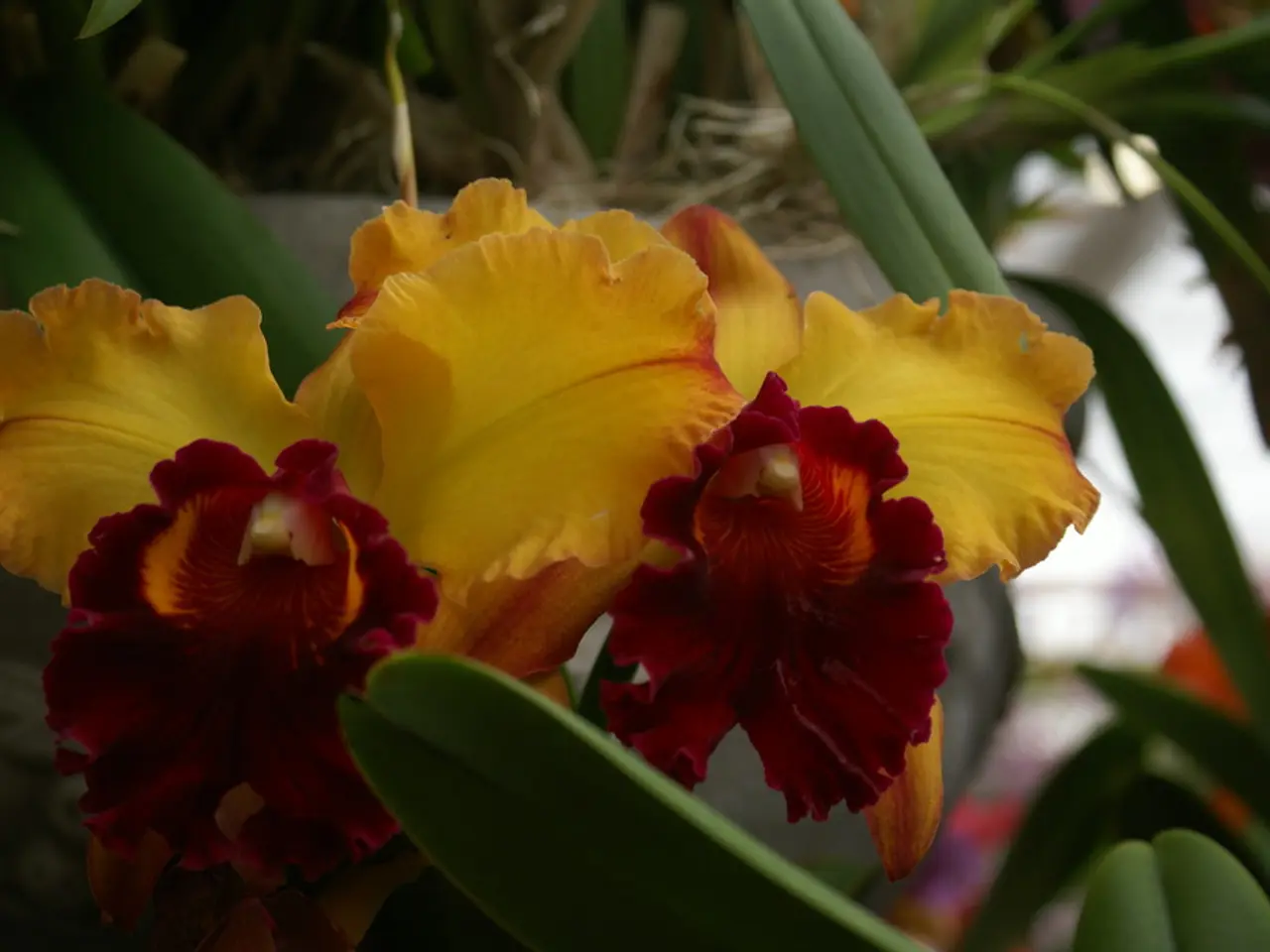Winter Blooms: A Guide to Planting, Nurturing, and Sowing Hellebores for Vibrant Colors in the Chilly Months
In the heart of winter, when many gardens lie dormant, a burst of colour and life emerges from an unexpected source - the hellebore. These winter-flowering plants, now commonly known as Helleborus x hybridus due to extensive breeding, bloom from December to April, bringing a much-needed splash of colour to the garden.
One of the most fascinating developments in the hellebore world is the creation of enlarged nectaries that form a dark ruff at the middle of the flower, known as an anemone centre. Lorna Jones, a renowned hellebore breeder from Hertfordshire, England, has been at the forefront of this innovation, producing hellebores with this unique feature.
Another exciting development is the Helleborus niger Harvington hybrids, which have been blooming before Christmas for the past few years. These hellebores produce white flowers with golden stamens, adding a touch of winter magic to the holiday season.
Hellebores are not just visually appealing but also play a crucial role in supporting bees. Rich in nectar and pollen, they provide a vital food source for these important pollinators during the lean winter months.
One of the earliest bloomers among hellebores is Helleborus atrorubens, which starts flowering in February in northwest Europe. On the other end of the spectrum, Helleborus foetidus, although having a short lifespan, typically living only three to four years, is a good, all-round plant with dark green leaves and beetroot-coloured stems.
Lorna Jones has also created unique forms of hellebores, such as the 'spider hellebores' with several rows of narrow, same-shaped flowers, and the hellebore with lavender-pink sepals packed with a contrasting raspberry colour, named Helleborus x hybridus Red Apricot.
Despite their reputation for requiring a limy soil, hellebores can thrive in stony, humus-rich, acidic soil. They prefer to grow under the canopy of deciduous trees and shrubs, but they can also tolerate sunny situations.
Some of the top recommended hellebore species for growing in a garden include the Corsican Hellebore (Helleborus argutifolius), the Christmas Rose (Helleborus niger), the Stinking Hellebore (Helleborus foetidus), and the Majorcan Hellebore (Helleborus lividus). Each species offers unique characteristics, making them a valuable addition to any garden.
For instance, the Corsican Hellebore is the largest of the species hellebores, known for its late winter bloom and ease of care. It produces creamy, pale green flowers and has handsome tripartite foliage. The Christmas Rose, on the other hand, is known for its white flowers and is often associated with Christmas.
In terms of general care, hellebores require minimal maintenance. Once flowers have faded, it's recommended to cut the flowering stems to the ground, taking care not to damage new growth. Minimal fertilizer is recommended to prevent plants from flopping as they mature. Helleborus x hybridus are evergreen, but their leaves do die back and should be removed in December.
Hellebores are indispensable in the garden, looking good for months on end. Their long blooming period, combined with their ability to attract bees and their hardiness, make them a must-have for any garden enthusiast. By incorporating these enchanting plants into your garden, you can ensure a beautiful display of colour and life even in the depths of winter.
[1] RHS - The Royal Horticultural Society (2021) Hellebore: Plant Profile. [Online] Available at: https://www.rhs.org.uk/plants/26055/Hellebore/Details
[3] Hertfordshire Hellebores (2021) About Hellebores. [Online] Available at: https://www.hertfordshirehellebores.co.uk/about-hellebores.html
- Lorna Jones' unique 'spider hellebores' and 'lavender-pink' Helleborus x hybridus Red Apricot, with their distinctive flower shapes, contribute to the diversity of landscape in home-and-garden settings.
- In addition to their colorful blooms, hellebores provide an essential lifestyle element by supporting bees during winter months, providing a crucial food source through their nectar and pollen.
- Hellebores contribute significantly to the overall appearance and charm of a garden, with long-lasting flowers that create a vibrant, Everlandscape, particularly through winter and early spring seasons.




